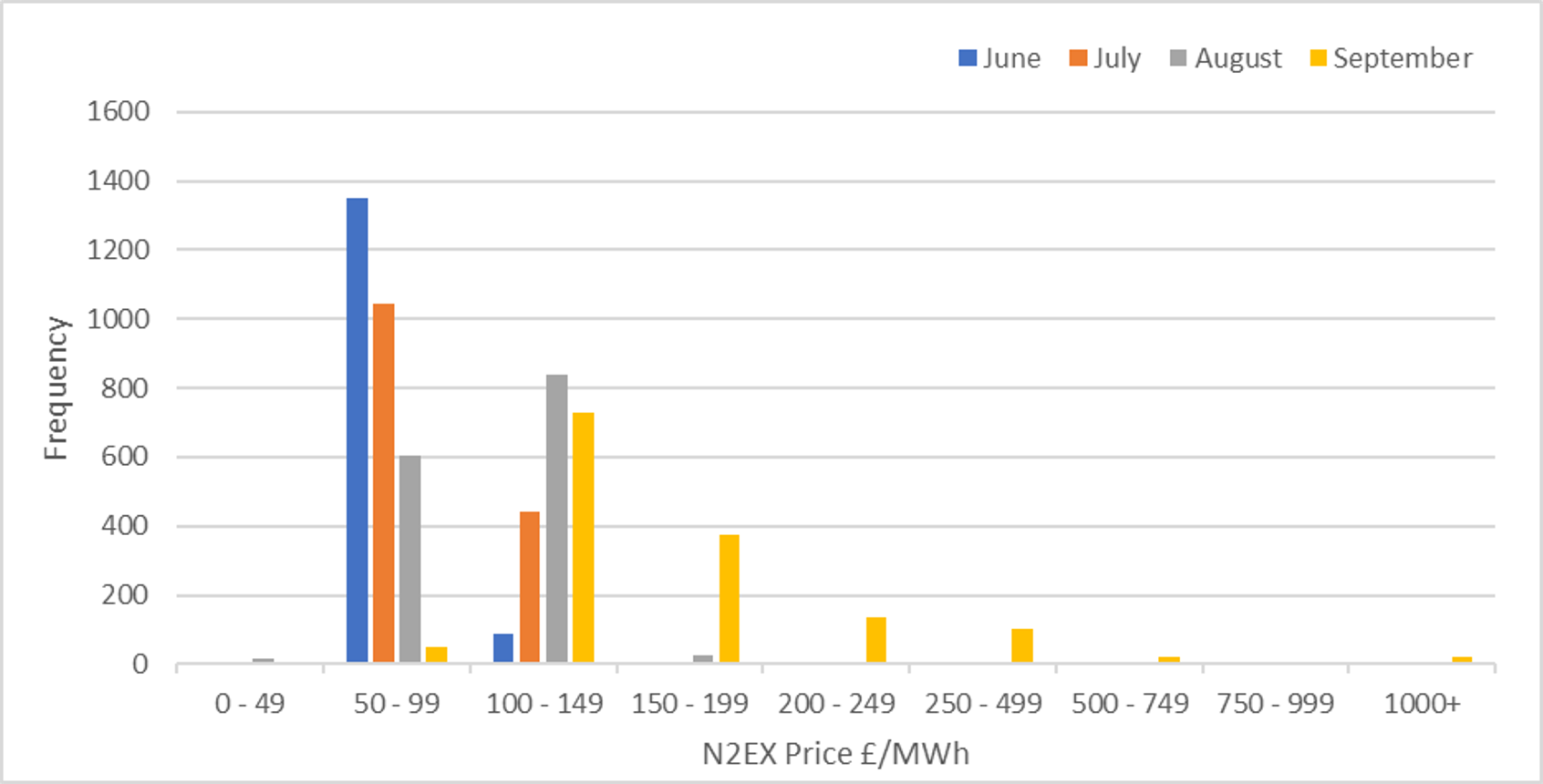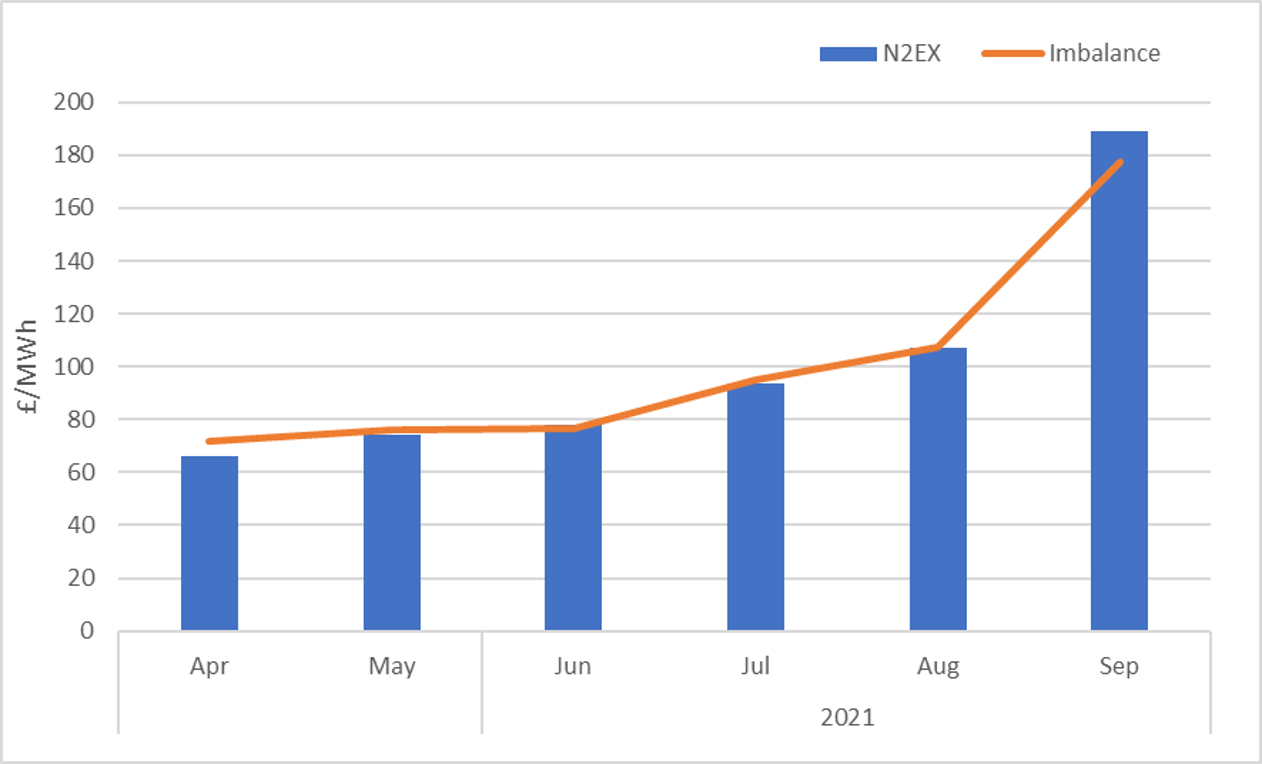Please click here to access the main AHDB website and other sectors.
Electricity price increases
Monday, 1 January 2001
Throughout summer the energy price trend has continued to incline at a steady rate. However, September’s has broken all boundaries by nearly doubling the previous month’s average prices.
The cost of commodity electricity peaked at over £4,000/MWh on 9 September and £2,500 on 12 September for imbalance and day-ahead prices, respectively. Both markets saw prices exceeding £1,000/MWh several times in the first half of September.
The graph to the right shows the monthly average of the instantaneous (imbalance) and day-ahead (N2EX) commodity prices for electricity from April to September 2021. Clearly, September was an exceptional month, averaging more than double the electricity prices of every other month other than August. While averages are useful, they do not tell the whole story. Particularly, the figures for September are skewed by the extraordinarily high prices seen towards the middle of the month.
To determine how much the data is being skewed, a frequency analysis was done on the day-ahead (N2EX) commodity prices from 1 June to 30 September. Clearly, there is an overall trend of rising price; however, in September there were several occurrences of prices exceeding £500 and particularly £1,000 for short periods of time. These extreme price spikes are not shown in any other month: June and July had no prices exceed £150, and August had no prices exceed £200.

So why is this happening?
There are many reasons behind the rise in energy prices throughout 2021, including interconnector issues, natural gas shortages across Europe, and generally poor weather for renewable generation.
September has been an extreme culmination on top of an already extraordinary year: around 100 MW of nuclear generation has been down for a mixture of planned and unplanned maintenance; meanwhile, a fire combined with planned maintenance has taken down the entirety of the IFA1 interconnector between England and France, removing 2 GW of capacity which is not expected to return in full until 2023 (although 1 GW is expected to return by the end of October); finally, wind generation continued to be low until the last week of September, accounting for only around 14% of total generation for most of the month. In comparison, wind generation accounted for nearly 25% of total electricity use in 2020.
With winter approaching, energy prices are only expected to continue the rising trend, however, September 2021 is still certainly an outlier to this trend.
If you have any questions or energy related queries, please call the GrowSave team at NFU energy on 024 7669 6612.

Eirinn Rusbridge, GrowSave, NFU Energy

Monthly average of the instantaneous (imbalance) and day-ahead (N2EX) commodity prices for electricity from April to September 2021

